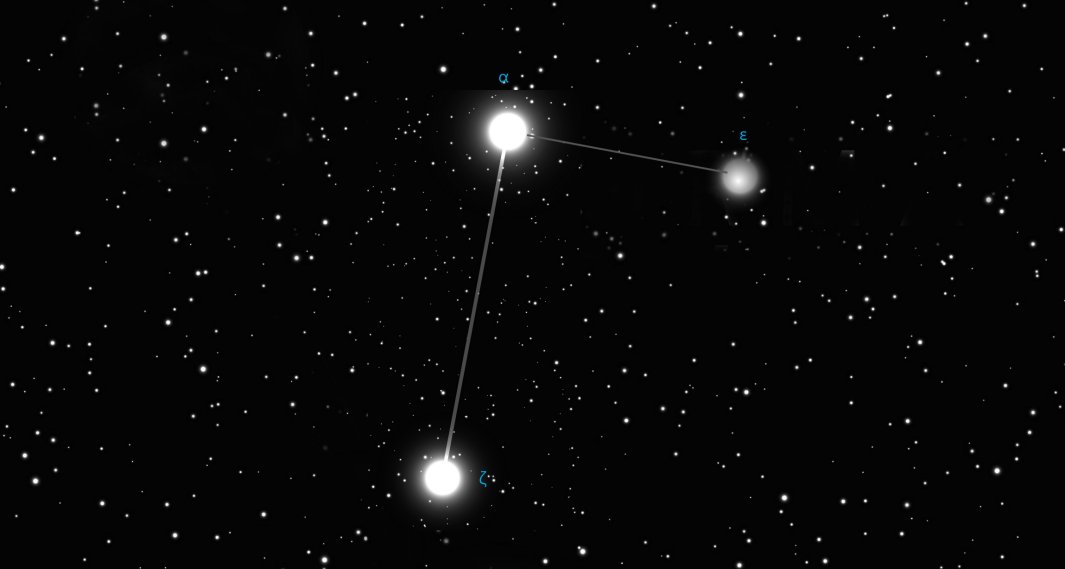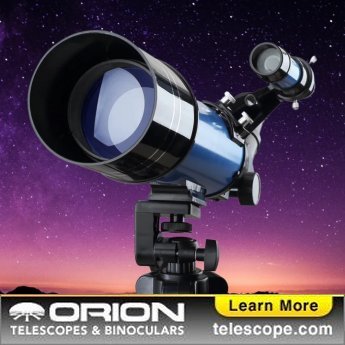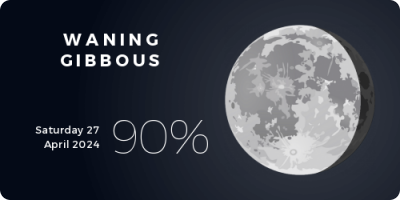Telescopium, the Telescope (Tel)
(tell-uh-SCOPE-ee-um)
The Southern constellation of Telescopium, the Telescope, is best viewed in Summer during the month of August.
Telescopium is the 57th largest constellation. It's brightest star is Alpha Telescopii at magnitude 3.49. The boundary of the Telescopium constellation contains 1 stars that host known exoplanets.
- Pronunciation:
- tell-uh-SCOPE-ee-um
- Meaning:
- Telescope
- Genitive:
- Telescopii
- Abbreviation:
- Tel
- Constellation Family:
- LaCaille
- Hemisphere:
- Southern
- Quadrant:
- SQ4
- Visibility:
- 40° N - 90° S
- Best viewing month*:
- August
- Area:
- 252 sq. degrees
- Size:
- 57th largest
- Right Ascension (avg):
- 19h 15m
- Declination (avg):
- -50°
- Brightest star:
- Alpha Telescopii (3.49)
- Stars with planets:
- 1
- Messier objects:
- |
- Caldwell objects:
- |
Brightest Stars in Telescopium
The 10 brightest stars in the constellation Telescopium by magnitude.
- Star
- Magnitude
- Spectral class
- Alpha Telescopii (α Tel)
- 3.49
- B3IV
- Zeta Telescopii (ζ Tel)
- 4.1
- G8/K0III
- Epsilon Telescopii (ε Tel)
- 4.52
- G5III
- Lambda Telescopii (λ Tel)
- 4.85
- A0V
- Iota Telescopii (ι Tel)
- 4.88
- G9III
- Delta Telescopii (δ1 Tel)
- 4.92
- B6IV
- Xi Telescopii (ξ Tel)
- 4.93
- M1II
- Eta Telescopii (η Tel)
- 5.03
- A0Vn
- Delta Telescopii (δ2 Tel)
- 5.07
- B3III
- Rho Telescopii (ρ Tel)
- 5.17
- F7V
Star Clusters in Telescopium
The most notable and easy-to-find star clusters in the constellation Telescopium . Also see all star clusters.
Galaxies in Telescopium
The most notable galaxies in the constellation Telescopium. Also see all galaxies.
- Name
- Alt name
- Type
- IC 4797
- elliptical
- IC 4837/4839
- galaxy pair
- Klemola 30
- galaxy group
- NGC 6861
- ring
Black Holes in Telescopium
These are the most well-known smaller (non-supermassive) black holes in the constellation Telescopium. Although black holes cannot be seen directly, the smaller ones are at the center of some star clusters and supernova remnant nebulae, which can be seen. Supermassive black holes are at the center of most galaxies, such as Sagittarius A* at the center of our Milky Way galaxy. Also see all black holes.
- Black hole
- Type
- HR 6819
- stellar
The Cosmic Telescope
Telescopium, a small and somewhat obscure constellation, may not be as well known or easily recognizable as some of its celestial neighbors, yet it represents the very tool that has allowed us to unravel the mysteries of the cosmos - the telescope.
Historical Context
Telescopium, Latin for 'the telescope,' is a modern constellation, introduced by French astronomer Nicolas Louis de Lacaille in the mid-18th century. Lacaille, known for naming several constellations in the southern hemisphere, dedicated this one to honor the instrument that revolutionized astronomy. It's worth noting that despite its name, Telescopium does not represent any specific telescope but rather the instrument in a generic sense.
Location and Key Characteristics
Located in the fourth quadrant of the southern hemisphere (SQ4), Telescopium is bordered by the constellations Ara, Corona Australis, Indus, Microscopium, Pavo, and Sagittarius. It spans over 252 square degrees of the celestial sphere and is best viewed from southern latitudes during the culmination of summer.
Telescopium is relatively faint, with no stars brighter than the fourth magnitude. Its brightest star, Alpha Telescopii, is a white giant of magnitude 3.5, located approximately 278 light-years away from Earth. This constellation does not have any meteor showers or Messier objects associated with it.
Celestial Objects of Interest
Despite its obscurity and lack of bright stars, Telescopium hosts several intriguing deep-sky objects. For instance, the galaxy group known as IC 4889 is a fascinating sight. It consists of five galaxies, the most prominent being the spiral galaxy ESO 142-G-19. However, exploring these objects requires a substantial telescope due to their considerable distance from Earth.
The constellation is also home to the radio source Telescopium A (PKS 1934-63), a bright and powerful far-infrared galaxy. Astronomers believe that its intense luminosity results from a massive starburst event, where new stars are forming at a significantly high rate.
Apart from these, several double stars such as Epsilon, Iota, and Zeta Telescopii provide interesting observation opportunities for astronomers equipped with amateur telescopes.
Observation
Given its southern location, Telescopium is best observed during July and August from locations in the southern hemisphere. Despite its low magnitude stars, once located, it offers an interesting perspective to amateur astronomers, especially those interested in deep sky observation and double stars.
* Constellation shown for northen hemisphere skies. For the southern hemisphere, constellations appear rotated 180 degrees (upside-down and left-right reversed) from what is shown. Remember that seasons are reversed too - summer in northern latitudes is winter in southern latitudes.
** Circumpolar constellations are visible year-round in the hemisphere listed (and not at all in the opposite hemisphere).





